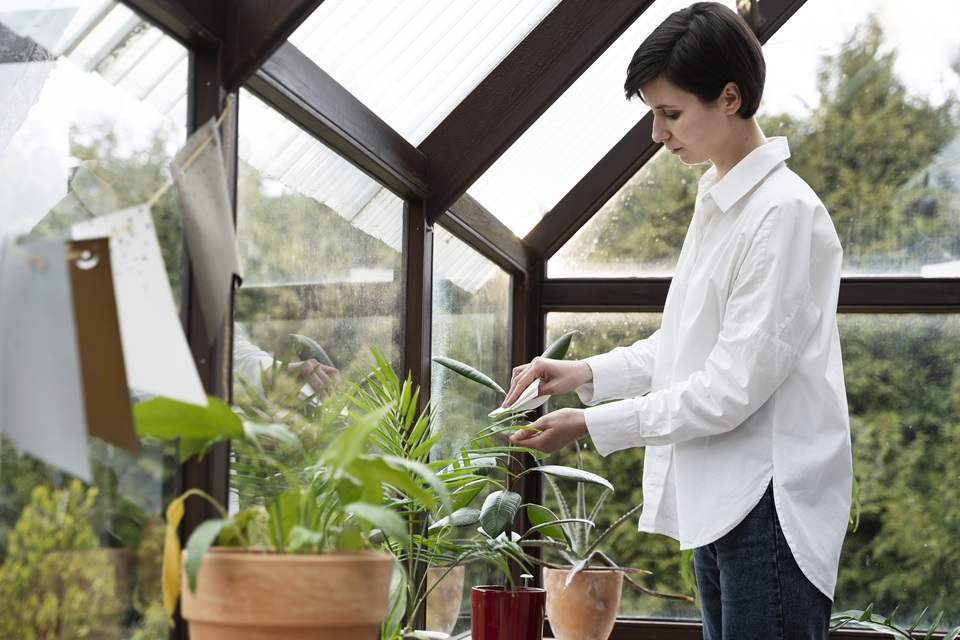Garden windows are a perfect location to grow plants indoors. Unlike traditional windows, garden windows are open to the outside and allow sunlight to filter through several panes of glass.
Select flowering plants, herbs, and greens that tolerate the light your window sill receives. Mix in trailing plants to create a visually appealing display.
Table of Contents
Alyssum
Alyssum proliferates in a sunny, well-draining garden window planter. Most miniature varieties grow only 6 inches tall but can spread two or more feet, making them perfect for filling your garden windows with color.
Licorice plant adds a touch of elegance to any garden window. This low-maintenance perennial thrives in dry conditions and is tolerant of frost and heat.
Snapdragons are cool-season flowers that work well in partially shaded garden windows. These fragrant plants produce eye-catching red, pink, purple, and white blooms. Many shorter snapdragon varieties can be grown in garden window containers, but some may need staking to stay upright.
Calibrachoa
Calibrachoa, or million bells, is a top choice for garden window boxes. Pair them with trailing ivy (Erigeron karvinskianus) or annual lobelias to create a flower-filled landscape.
Plant them in full sun and well-draining soil. They also grow well in containers and hanging baskets. Fertilize them regularly with a liquid fertilizer. They don’t require deadheading, but pinching them back encourages bushier growth and more flowers.
In cooler climates, bring planters indoors in the fall to allow plants to enter dormancy. They are easy to overwinter as houseplants by reducing watering and keeping the planters in a sunny window.
Coleus
Coleus adds bright foliage to shade spots, contrasting with dense green shrubs like ferns or houseplants. Pierson recommends the Premium Sun ‘Plum Parfait’ coleus plant with ‘Fireworks’ purple fountain grass (Pennisetum hybrid) and Dragon Wing red begonia (Begonia hybrid) in full sun gardens. He has varied coleus plants such as ‘Black Dragon’ that contrast nicely with dark-colored flowers in a mixed garden bed or planter.
Use trailing coleus plants to soften the edges of a window box or trough, and pair them with lobelias or annual petunias for a flower-filled look. The ‘Alabama Sunset’ cultivar has brick-red leaves, while ‘Dipt in Wine’ boasts small burgundy and lime leaves.
Begonias
Begonias grow well in the partial shade of a garden window. They require little care, and many varieties (like Dragon Wing begonia) can tolerate full sun. Upright begonias benefit from staking.
Watering and fertilizing are crucial to success with your garden windows. Aim for deeply watering once a week, and use a balanced liquid fertilizer once per month during the growing season.
Herbs and greens are great choices if your garden window is near a kitchen. They’re low maintenance, easy to harvest, and a fresh, flavorful meal addition.
Salvia
Many people use window boxes to grow herbs, particularly in the kitchen, but they work well in living rooms, offices, and other locations that can benefit from greenery. Herbs are easy to care for and often produce abundant flowers that can be used in cooking.
Ornamental salvias are another excellent choice for garden windows, with colors ranging from the traditional scarlet to purple, pink, and white. ‘Salvia splendens’ and other bedding varieties are profuse bloomers, especially when paired with annual marigolds and zinnias or perennials such as fragrant Oriental lilies.
Sweet Potato Vine
Sweet potato vine is a fast-growing ground cover that’s becoming increasingly popular. There are several varieties, including bright chartreuse ‘Margarita’ and dark purple ‘Blackie’. These can cover large areas quickly, although it’s best to plant them with a sturdy trellis or fence to keep their sprawling tendencies under control.
Choose fillers that complement the thrillers, such as trailing ivy and annual lobelias. These plants add depth to your window box and soften its look.
Lobelia
Lobelias are easy-to-grow plants that love the sun and work well in garden windows. Trailing varieties like ‘Sapphire Blue’ look great in window boxes and soften the edges of rockeries or raised beds.
Annual lobelias should be planted in spring after the danger of frost has passed. Dig a hole slightly larger than the nursery container and gently wiggle the roots to remove air pockets.
Perennial lobelias can be propagated by taking softwood cuttings in summer or planting seeds. Sow the seeds in a propagator in February or March and keep them warm to encourage germination.



